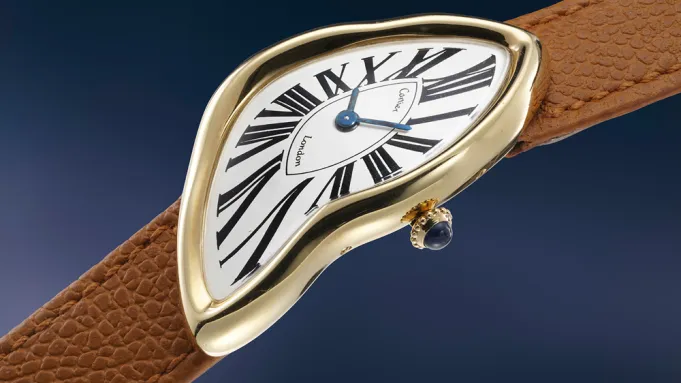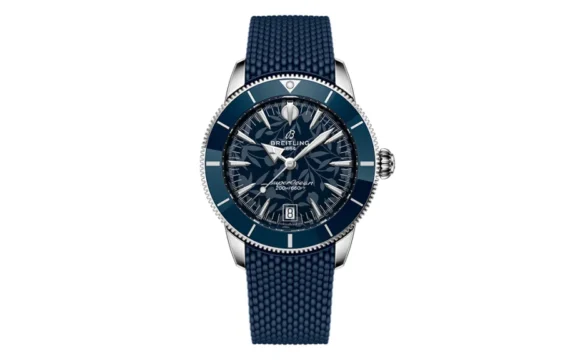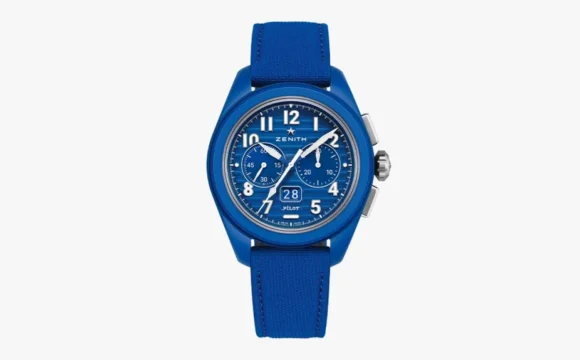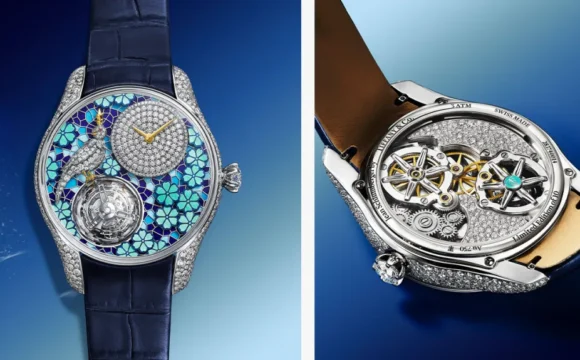Seen in recent years on the wrists of style trailblazers such as Kanye West and Tyler the Creator, the Cartier Crash has seen a near meteoric rise in popularity for it asymmetrical Salvador Dali-esque case shape. In 2022, the Surrealist timepiece reached a new pinnacle when an early model sold for a record $1.5 million on auction site Loupe This. Its history, however, dates to 1967 in London when the city was at its peak as a style capital during the Swinging Sixties. According the ninth-generation Cartier, Francesca Brickell Cartier, in her definitive tome The Cartiers: The Untold Story of the Gamily Behind the Jewelry Empire, her grandfather, Jean-Jacques Cartier in collaboration with Cartier designer, Rupert Emmerson, aimed to adjust the brand’s Maxi Oval design to look as if it had been in a crash. Apparently, there was even a version with a cracked dial that was proposed. The result, of course, is the intact dial version with a movement created in consultation with Jaeger-LeCoultre set within a squiggly case design that continues to capture the hearts of collectors today.

The London versions, which remain the most collectible, are defined by a more fluid and organic shape with sketched Roman numerals and an elongated Cartier signature. Early versions were handmade in limited quantities, adding to their allure. The Paris models were released later, starting in 1991, and are distinguished by a slightly more symmetrical and refined shape in contrast to the original London design, as well as Roman numerals that are a bit more uniform. It was also produced in higher quantities. Regardless, the design remains a standout in the often-staid parameters of watch design. Its recent endless hype may have an adverse effect on its popularity, but for those that love it and can afford it, it remains a top-of-the-list acquisition.
From the article by Allen Farmelo, Paige Reddinger, Victoria Gomelsky, Oren Hartov, Blake Buettner








